The Agile Bookshelf
Obviously, not all my experience is first-hand. How should it? A lot of people are active in the area of product development, in software development and turning command & control hirarchies into true agile organizations. Some of the books below are simply must-read books. A lot helped me to increase my understanding of certain aspects. Below, find my agile bookshelf.

INSPIRED – How to create tech products customers love
by Marty Cagan
This book is a true inspiration. Ever asked yourself “How can I build great products?”. Read this book. Marty has true experience from his various positions he held – amongst them SVP of product management and design at eBay. He condensed a lot of his knowledge into this book. Marty focusses on the ingredients of great products: People, Processes and (surprise) Products. He describes the people, their roles, their way of work, the overall processes on how to structure your product development and talks about how to come to great products. Marty is a true source of inspiration. If you ever have a chance to talk to Marty – do so!

DRIVE The Surprising Truth About What Motivates Us
by Daniel H. P
Dan Pink and his book about motivation changed a lot for me. His observations and studies on what motivates people really changed my view on people and current compensation systems. If you ever wondered what buttons you have to press to motivate your team – read this book. I simply say “Purpose, Autonomy, Motivation – PAM”.

GOOD to GREAT
by Jim Collins
This is one of the books which left me baffled. Jim Collins analyzes the commonalities of companies that transformed from good to great over a 15-year-period. His main findings are:
(1) Great companies have a Level 5 leader, who is humble, driven, and committed to the company’s success.
(2) Great companies focus on what they are best at and pursue excellence in that area, while avoiding distractions.
(3) Great companies have a culture of discipline, with disciplined people who adhere to a disciplined thought process and action.
(4) Great companies confront the brutal facts of their current reality, yet maintain faith that they will prevail in the end.
(5) Great companies use technology as an accelerator of momentum, not a creator of it, and they avoid using it as a primary strategy for growth.
This book is definitely a MUST READ book.

Radical Focus
by Christina Wodtke
Christina talks in her book about how to successfully execute goals by using Objectives and Key Results (OKRs). She explains how OKRs can help individuals and organizations prioritize their efforts and focus on what truly matters, while also providing a framework for measuring progress and success. The book provides a comprehensive and actionable guide (isn’t it THE GUIDE for OKR’s?) for anyone looking to improve their goal-setting and execution abilities. Read it, worth every page!

REWORK
by Jason Fried, David Heinemeier Hansson
This book is both – serious content and fun to read. Amazing how the two founders of 37signals manage to combine their daily-work essence and easy-to-read text. The book contains statements like “ASAP is poison”, “Pick a fight”, “Emulate drug dealers”, “Say no by default” and a good explaination from their business experience why they picked these statements. A great reading … my favorite statement is “Build half a product, not a half-assed product”. There is truth in it.

The Age of Agile
by Stephen Denning
Stephen explores in his book how agile methods can transform organizations to better adapt to the demands of the modern business environment. He explains how agile principles, which were originally developed for software development, can be applied to all aspects of an organization, from strategy and management to culture and leadership.
The book highlights the benefits of agility, such as increased flexibility, faster innovation, and better customer focus, and provides practical guidance for implementing agile practices. Denning draws on case studies and real-world examples to illustrate how agile can be successfully applied in various industries and organizational contexts.
One of the best books on agility in business I’ve seen.


THE LEAN STARTUP
by Eric Ries
Bad people could say “The book doesn’t bring any news. It only puts well-known practices into a new context”. Yes, it does. And it delivers great examples in practical context. The book itself often seen as the starting point for the whole “LEAN Startup” movement. Eric and the book stand for a lot of great ideas. For me a definitive must-read-book when in agile / LEAN context. Eric talks in this book about the BUILD-MEASURE-LEARN cycle, about the interdependencies of the various KPI’s (and how you measure them), why you should define hypothesises and experiments to do validated learning (over gut feeling) based decisions, when it’s time to pivot from your original plans and a lot (!) more. Don’t expect to read the book only once …

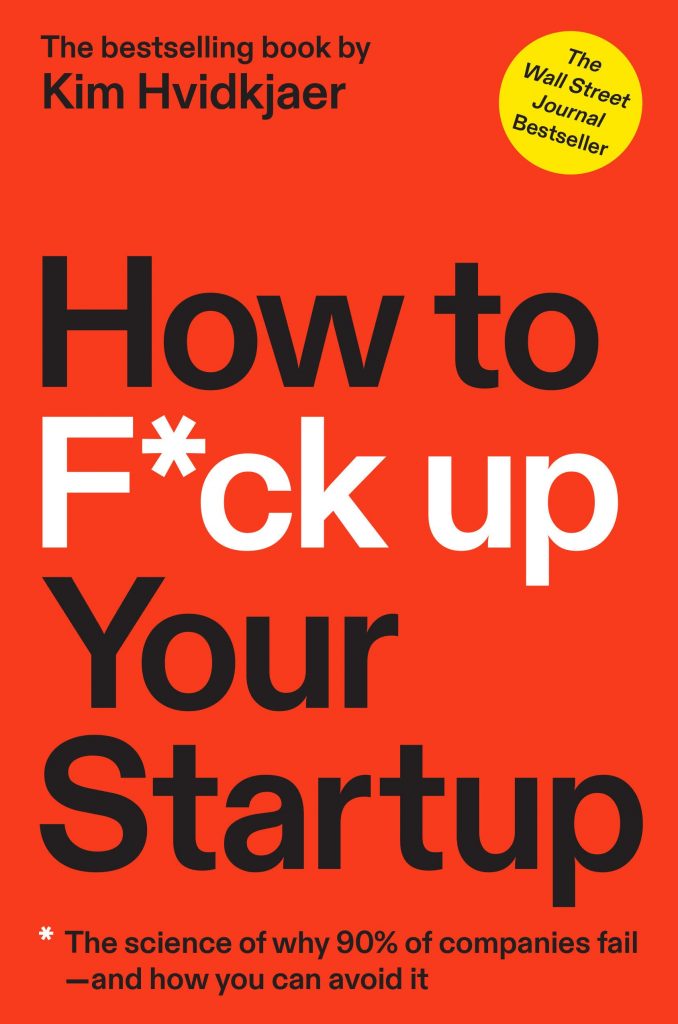
How to F*ck up Your Startup
by Kim Hvidkjaer
Kim describes common mistakes that entrepreneurs make when launching and growing a startup, providing practical advice for avoiding these pitfalls. He covers a range of topics, from fundraising and hiring to product development and marketing.
He provides real-world examples and insights from successful entrepreneurs who have overcome their own mistakes to build successful companies.
The book is very structured and reflects real-world expertise from Kim’s journey through various startups and his experience as venture builder. Great read!
Especially valuable when you’re in a phase BEFORE starting up.

The Hard Things About Hard Things
by Ben Horowitz
Ben talks in his book about the challenges of running a successful business, drawing on his experiences as a Silicon Valley entrepreneur and venture capitalist. The book covers a range of topics, from building and managing a team to raising capital and dealing with tough decisions – Ben does also touch sensitive topics when being the CEO of a company. Ben emphasizes the importance of being honest and transparent with employees, maintaining a strong culture, and persevering through difficult times.
The book provides practical advice and insights into the realities of entrepreneurship, highlighting the hard things that many business leaders face and offering strategies for overcoming them.
The book is s great read for people who ask themselves if being a CEO allows being a human being in parallel … Great book!

Creativity Inc
by Ed Catmull
Ed’s book is all about the creative process and how to build and sustain a culture of innovation in organizations. Being the co-founder of Pixar Animation Studios, he shares his experiences in managing and leading one of the most successful creative companies in the world.
The book emphasizes the importance of creating a safe and supportive environment for creative teams, where they can take risks, experiment, and collaborate to achieve their goals.
Ed also provides insights into the process of creative problem-solving, as well as strategies for managing the inevitable challenges and setbacks that arise during the creative process.
The book is a real inspiring read – especially if you’re familiar with some of the movies. And “The Braintrust” meeting format is just an outstanding example of “candor in action”.

The Culture Code
by Daniel Coyle
Daniel talks in his book about how successful organizations build and sustain strong cultures. He draws on insights from a range of industries, including sports, business, and the military, to identify the key components of successful cultures.
He emphasizes the importance of creating a safe and supportive environment, building strong relationships and connections, and establishing a shared sense of purpose and identity.
A great read that increases definitely the understanding on how to create great culture within organizations.

Creative Selection
by Ken Kocienda
Ken, a former software engineer at Apple, gives insights about the development of Apple’s most iconic products, exploring the company’s approach to innovation through a process of selecting, iterating and refining the best ideas. Kocienda focuses on his own experience in the development team working to solve the issue of having a touch screen without a keyboard. The book allows a look over the shoulder of engineers inside Apple. A great read!

Transforming NOKIA – The Power of Paranoid Optimism to Lead Through Collosal Change
by Risto Siilasmaa
If you have some connection to Nokia as a business, if you did experience the power of Nokia in it’s shining days, this book is definitely worthwhile reading. Risto gives a lot of background information on how decisions were made in Nokia (or not) and how it came to the tipping point where the Nokia power vanished. Risto does also give some great insights on how to lead huge organisations.
For me, one of the key points to remember is hidden in the last chapter. Risto talks about Nokia these days. He described his observation that nobody inside Nokia was actively working in AI. It simply was not a topic at the time for Nokia. For others it moved the world. Risto didn’t have too much knowledge … and decided to create knowledge and carry this knowledge into his organization. He took a coursera class on machine learning and started teaching others. WOW!

RUNNING LEAN
by Ash Mauria
Eric Ries delivers great food for thought in his book described above. He also gives great examples – but no real advice on how you could address a certain issue. How should you create a plan? How valid is this plan? Where is the riskiest element in this plan? What is a LEAN Canvas? How does it connect to our customer problems? How should you work with your customer when doing interviews? Ash delivers a lot of great input to put the ideas of LEAN in action. For me, the book is really great to kick-start yourself when implementing LEAN (even in a bigger company). A definite must read (multiple times) book.

Management 3.0
by Jurgen Appelo
Agile organization means automatically a different approach of managing people. Jurgen focusses in his book on different aspects of agility and leadership principles, starting with software development team leaders to middle management and up towards upper management. The book is intended to help the various management levels to find their new role within an agile organization. Jurgen looks at both sides of the coin – at management aiming at agile and also on agile people wanting to become managers.


Geschichten vom SCRUM
by Holger Koschek
You’re new to SCRUM? You do understand German language? You want to understand the basics of SCRUM? You’re not interested in boring scientific readings?
Take this book – it’s very fun to read, it’s entertaining, it doesn’t contain too many pages but it still fulfills the promise of introducing you to SCRUM.
The whole methodology of SCRUM is wrapped into a story where people want to create a trap for dragons.

Think like amazon – 50 1/2 ways to become a digital leader
by John Rossman
Read, summary outstanding.
Nice book. Lesser learnings than in other books. Very much tailored to the fact that Jeff Bezos is a visionary leader and the brain behind the organization.
Most impressive for me personally – idea 16 – which contains a very condensed and impressive summary of “Being digital”:
“Being digital is about changing and improving not just the oganization but also yourself. Being digital is about speed and agility, not just for your customer but in how you get work done and collaborate as an organization. To drive permanent and lasting change, be deliberate in the different habits your direct team starts to practice as part of this mission.”

Continuous Delivery
by Jez Humble, David Fairley
Eric Ries seeds some thoughts on Continuous Delivery and the reasoning why you should work on such a quite technical topic in your software development department. He, however, focusses more on the business reasoning.
Jez and David talk directly from their technical practice. The touch not only facets – but to into detail of automation, deployment pipelines, various test and staging systems, feature based development, configuration management, testing strategies, zero-downtime releases, infrastructure management, risk assessments and more. This book helped us a lot to get Continuous Delivery implemented.

Trillion Dollar Coach
by Eric Schmidt
“Trillion Dollar Coach” is a book about Bill Campbell, a legendary Silicon Valley coach and mentor who helped to build some of the world’s most successful companies.
The book is a great read and unveils some really interesting insights about Silicon Valley companies and who pulled what strings at what point in time.
The unfortunate truth is that an individual like me will not get access to such a calibre of a coach. Reading the book didn’t give me too much advice and left me a bit lost like sitting on the passenger seat.
Nevertheless, an interesting read!

Web Operations
by John Allspaw, Jesse Robbins
The idea of DevOps is currently around. How to bring software developers and system administrators closer together is a huge question in the industry. John and Jesse combine a lot of knowledge from various authors – and experts in their field – into this book. It touches topics like Cloud Computing, Metrics, Continuous Delivery, Infrastructure As Code (my favorite), Monitoring, Database strategies, Storage, Agile infrastructure and more. Each author doesn’t go too much into detail – but the overall book gives a great overview on what could and should be achieved by your agile organization’s IT operation team.
My current reading backlog

The Infinite Game
by Simon Sinek
Reading just now.

Empowered
by Marty Cagan, Chris Jones

Sprint – Solve Big Problems and Test New Ideas in just Five Days
by Jake Knapp

Measure What Matters
by John Doerr

Team of Teams – New Rules of Engagement For a Complex World
by General Stanley McChrystal

User Story Mapping
by Jeff Patton

The Art of Scalability
by Martin L. Abbott
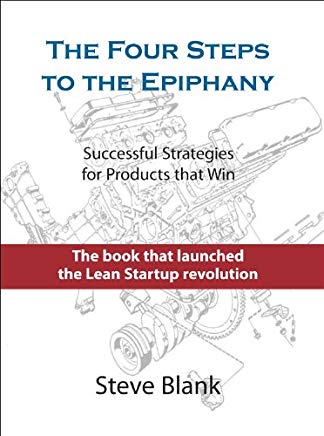
The Four Steps to the Epiphany
by Steve Blank
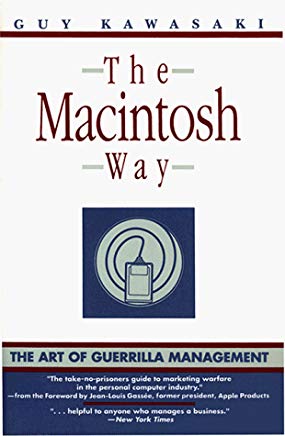
The Macintosh Way
by Guy Kawasaki

Hit Refresh: The Quest to Rediscover Microsoft’s Soul and Imagine a Better Future for Everyone
by Satya Nadella

The Goal: A Process Of Ongoing Improvement
by Eliyahu Goldratt and Jeff Cox
Reading recommendation from J. Rossmann

The Master Algorithm: How the Quest for the Ultimate Learning Machine Will Remake Our World
by Pedro Domingos
Reading recommendation from J. Rossmann

Zero to One
by Peter Thiel
Reading recommendation from J. Rossmann
Reading List inspired by Scaling Up – Verne Harnish

SCALING UP – How a Few Companies Make It … and Why the Rest Don’t
by Verne Harnish

TEEMING – How Nature’s Oldest Teams Adapt and Thrive
by Tamsin Woolley-Barker, PhD

Humaocracy: Creating Organizations as Amazing as the People Inside Them
by Gary Hamel and Michele Zanini

Outrageous Empowerment: The Incredible Story of Giving Employees Their Brains Back
by Ron Lovett

The Goal: A Process of Ongoing Improvement
by Eliyahu M. Goldratt

Care to Dare – Unleashing Astonishing Potential Through Secure Base Leadership
by George Kohlrieser

Bringing Out the Best in People: How to Apply the Astonishing Power of Positive Reinforcement
by Aubrey C. Daniels

Influence: The Psychology of Persuasion
by Robert B. Cialdini

Uncommon Service
by Frances Frei and Anne Morriss

Hidden Champions of the Twenty-First Century: The Success of Unknown World Market Leaders
by Hermann Simon

The Customer Funded Business
by John Mullins

Confessions of the Pricing Man: How Price Affects Everything
by Herrmann Simon

Great by Choice
by Jim Collins and Morten T. Hansen

SCRUM: The Art of Doing Twice the Work in Half the Time
by Jeff Sutherland

What’s in it for them?
by Joe Polish

Negotiate without Fear
by Victoria H. Medvec

Relationship Marketing: Successful Strategies for the Age of the Customer
by Regis McKenna

The Soul of Money
by Lynne Twist

Key Performance Indicators
by Bernard Marr

Topgrading: The Proven Hiring and Promoting Method That Turbocharges Company Performance
by Bradford D. Smart

first, break all the rules: What the World’s Greatest Managers do Differently
by Marcus Buckingham and Curt Coffman

change to strange: Create a Great Organization by Building a Strange Workforce
by Daniel M. Cable
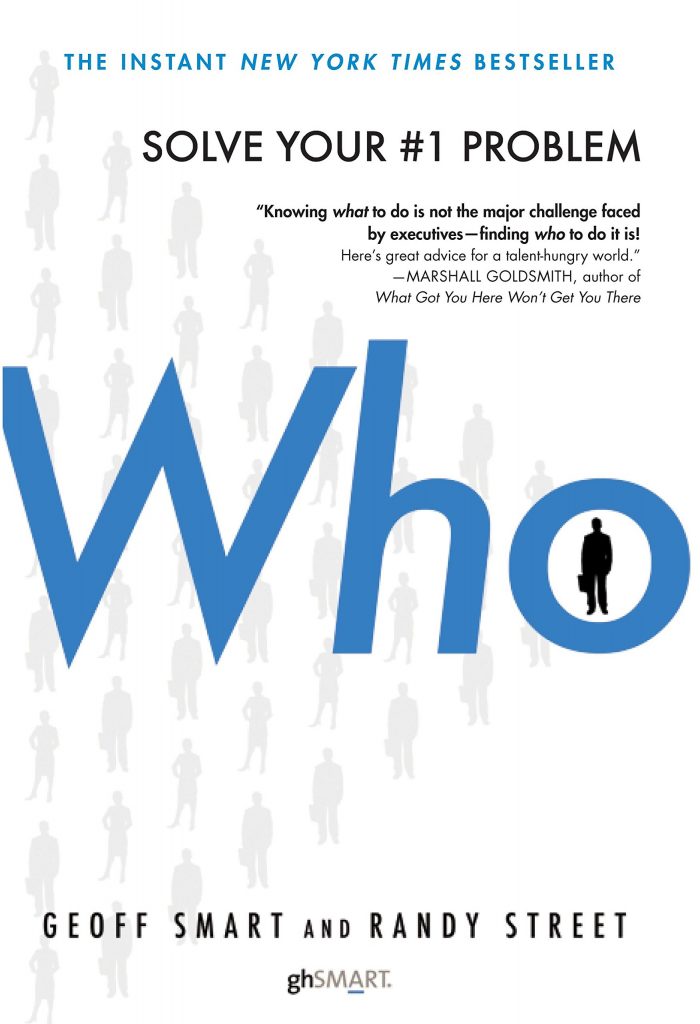
Who: The A Method for Hiring
by Geoff Smart and Randy Street

Scaling Up Compensation: 5 Design Principles for Turning Your Largest Expense into a Strategic Advantage
by Verne Harnish and Sebastian Ross

PEAK: How Great Companies Get Their Mojo from Maslow
by Chip Conley

The Great Game of Business: The Only Sensible Way to Run a Company
by Jack Stack and Bo Burlingham
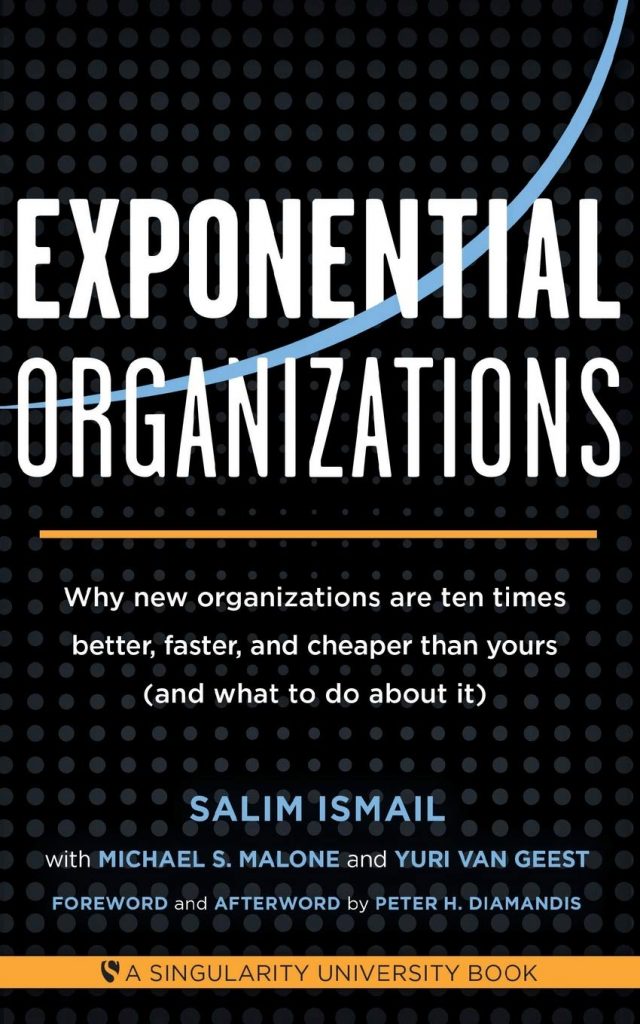
Exponential Organizations: Why new organizations are ten times better, faster, and cheaper than yours (and what to do about it)
by Salim Ismail

The Happiness Advantage: The Seven Principles of Positive Psychology that Fuel Success and Performance at Work
by Shawn Achor

The Weekly Coaching Conversation: A Business Fable about Taking Your Team’s Performance-And Your Career-To the Next Level
by Brian Souza

Lean In – Women, Work, And The Will To Lead
by Sheryl Sandberg

Leadership and the one minute manager
by Ken Blanchard and P. and D. Zigarmi

Coaching Habit: Say Less, Ask More & Change the Way You Lead Forever
by Michael Bungay Stanier

The One Thing You Need to Know: … About Great Managing, Great Leading and Sustained Individual Success
by Marcus Buckingham

The New Rules of Marketing and PR: How to Use Social Media, Online Video, Mobile Applications, Blogs, News Releases, and Viral Marketing to Reach Buyers Directly
by David Meerman Scott

Epic Content Marketing: How to Tell a Different Story, Break through the Clutter, & Win More Customers by Marketing Less
by Joe Pulizzi

Lords of Strategy: The Secret Intellectual History of the New Corporate World
by Walter Kiechel III

The Inside Advantage: The Strategy That Unlocks the Hidden Growth in Your Business
by Robert H. Bloom and Dave Conti
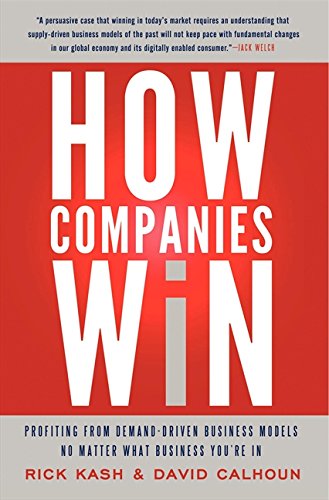
How Companies Win: Profiting from Demand-Driven Business Models No Matter What Business You’re In
by Rick Kash and David Calhoun


Pingback: "DECIDE & CONQUER" by David Siegel - a Book review - agile-minds.com
Pingback: "the REMIX" by Lindsey Pollak - a Book review - agile-minds.com